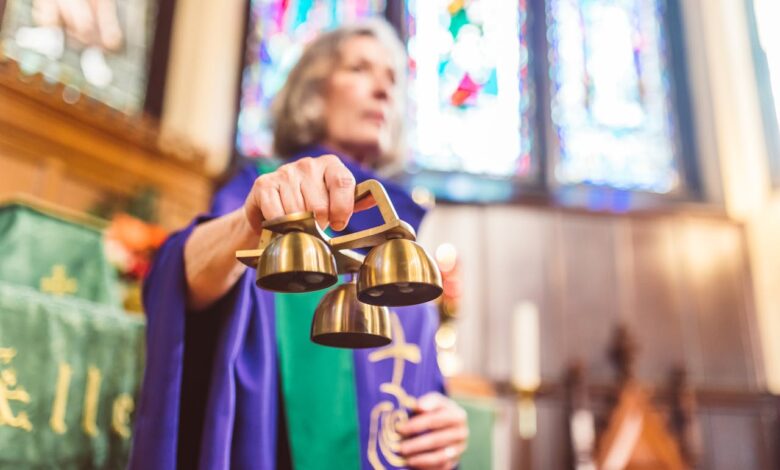Echoes of Faith: Altar Bells and Their Place in Catholic Worship

You walk into the old cathedral and pause to take it all in. The soaring ceilings, the stained glass windows, the smell of incense still lingering in the air. As you find your pew and settle in, you hear a clear, pure tone ring out from somewhere up near the altar. Another bell tone echoes through the sanctuary. If you didn’t know better, you might think it’s a doorbell or a service bell from the rectory next door. But no, those are altar bells, an integral part of the Catholic mass for centuries. Keep reading to learn all about the history and symbolism of altar bells, and why their ringing still resonates with worshipers today.
The History and Symbolism of Altar Bells in the Catholic Church
For centuries, altar bells have been an integral part of Catholic Mass, used at strategic points to call worshippers to attention.Their earliest use dates back to the 7th century, when bells were rung during the consecration of the Eucharist to indicate the point at which the bread and wine became the body and blood of Christ.
Over time, the ringing of bells took on more symbolic meaning. The three rings during the consecration represent the Trinity: the Father, the Son, and the Holy Spirit. Bells are also rung at the elevations of the host and chalice, symbolizing the proclamation of Christ’s sacrifice to heaven and earth.
Their ringing adds a sense of ritual and solemnity, especially at the consecration when all heads bow and kneel at the sounding of the bells. For many Catholics, the familiar peal of the altar bells triggers a visceral sense of connection to a tradition spanning centuries. Though Vatican II made their use optional, many parishes still employ altar bells to preserve this meaningful part of the Church’s heritage.
When Are Altar Bells Rung During the Mass?

During the Consecration
The most well-known time altar bells are rung is during the consecration of the Eucharist.When the priest elevates the host and chalice and transforms the bread and wine into the body and blood of Christ, the altar servers ring the bells. This alerts the congregation to this sacred moment and calls their attention to worship and adore Christ’s presence.
At the Beginning and End of Mass
Altar bells are also commonly rung at the beginning of Mass when the priest first approaches the altar, and at the end of Mass after the final blessing. The bells signal the start and finish of the liturgy.
During Other Solemn Moments
The ringing of altar bells highlights the sacredness of these rituals and focuses the congregation’s reverence. Their melodic tones echo the joy of the Gospel and call us to worship.Some parishes also ring the altar bells at other especially solemn moments during Mass like:
- During the Gloria when we praise God’s glory.
- When the priest incenses the altar, cross, and congregation.
- During the elevation of the paten and chalice before the Eucharistic prayer.
- When the priest genuflects or bows to the tabernacle or altar.
Though not as commonly used today, altar bells remain an important part of Catholic tradition and liturgy. Their ringing resonates with the eternal, reminding us of the timeless mysteries celebrated at Mass. A simple yet powerful symbol, altar bells echo faith through the ages.These religious items hold significant spiritual value in Catholic worship.
Conclusion
So next time you hear the bells ring during Mass, remember their rich history and significance. Let the bells be a call to prayer, a sign of reverence, and a reminder of the angels and saints joining us in worship. Their echoes connect us to centuries of faith and tradition. Yet they also call us to the present moment – to actively participate in the prayers and rites before us. The bells invite us to lift our hearts and minds to God along with the priest at the altar. Simple though they are, altar bells continue to play a vital role in the life of the Church.




